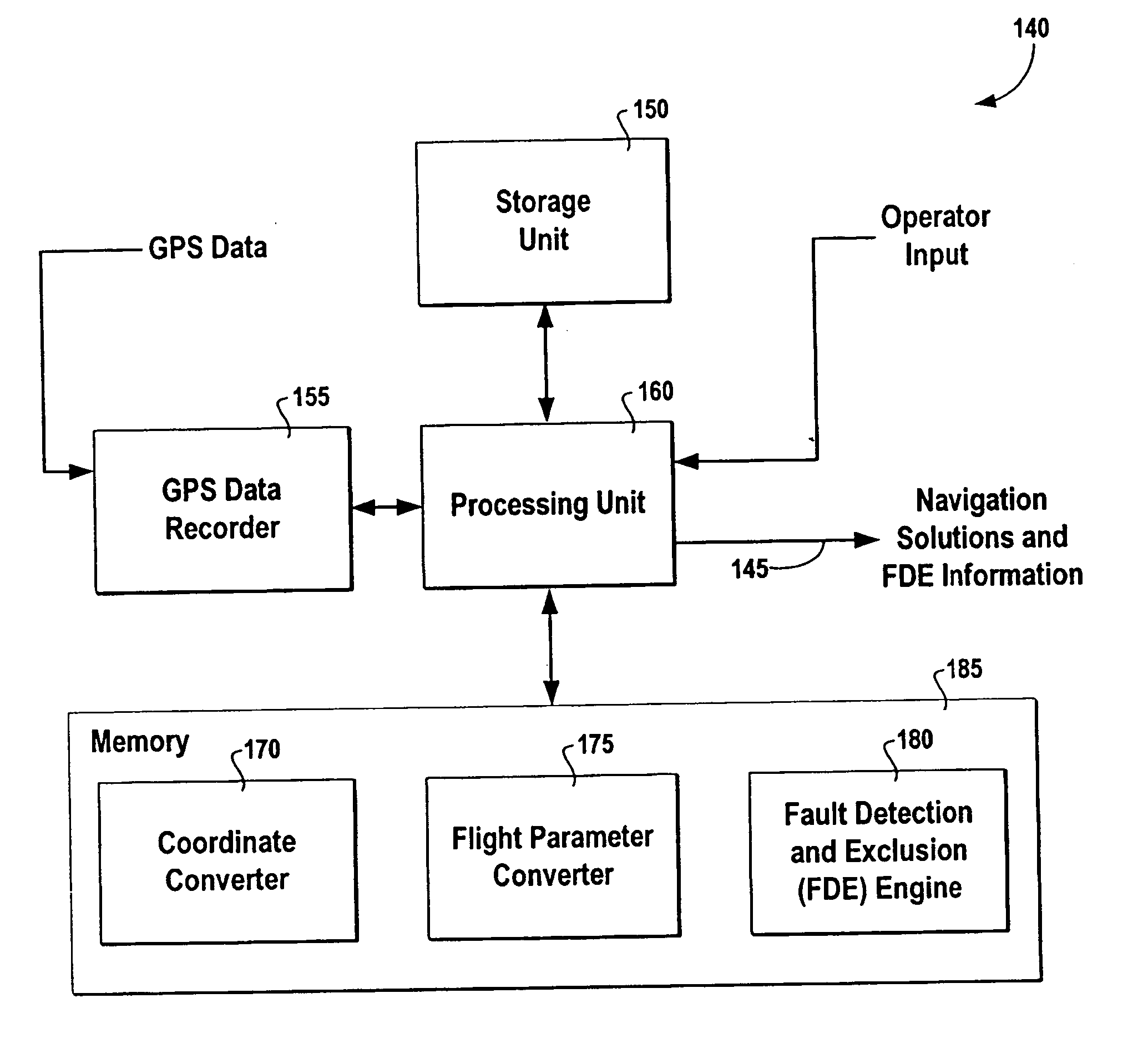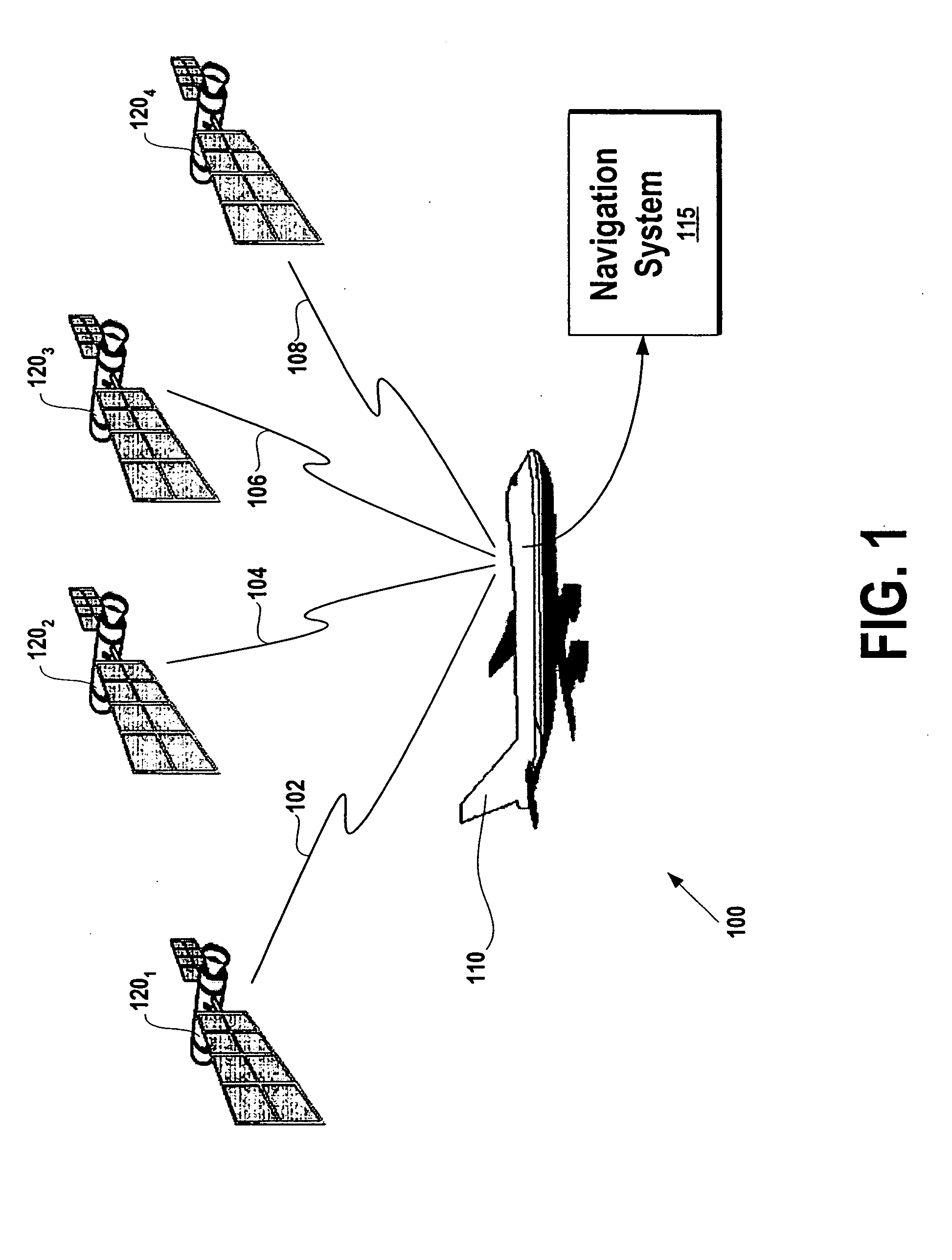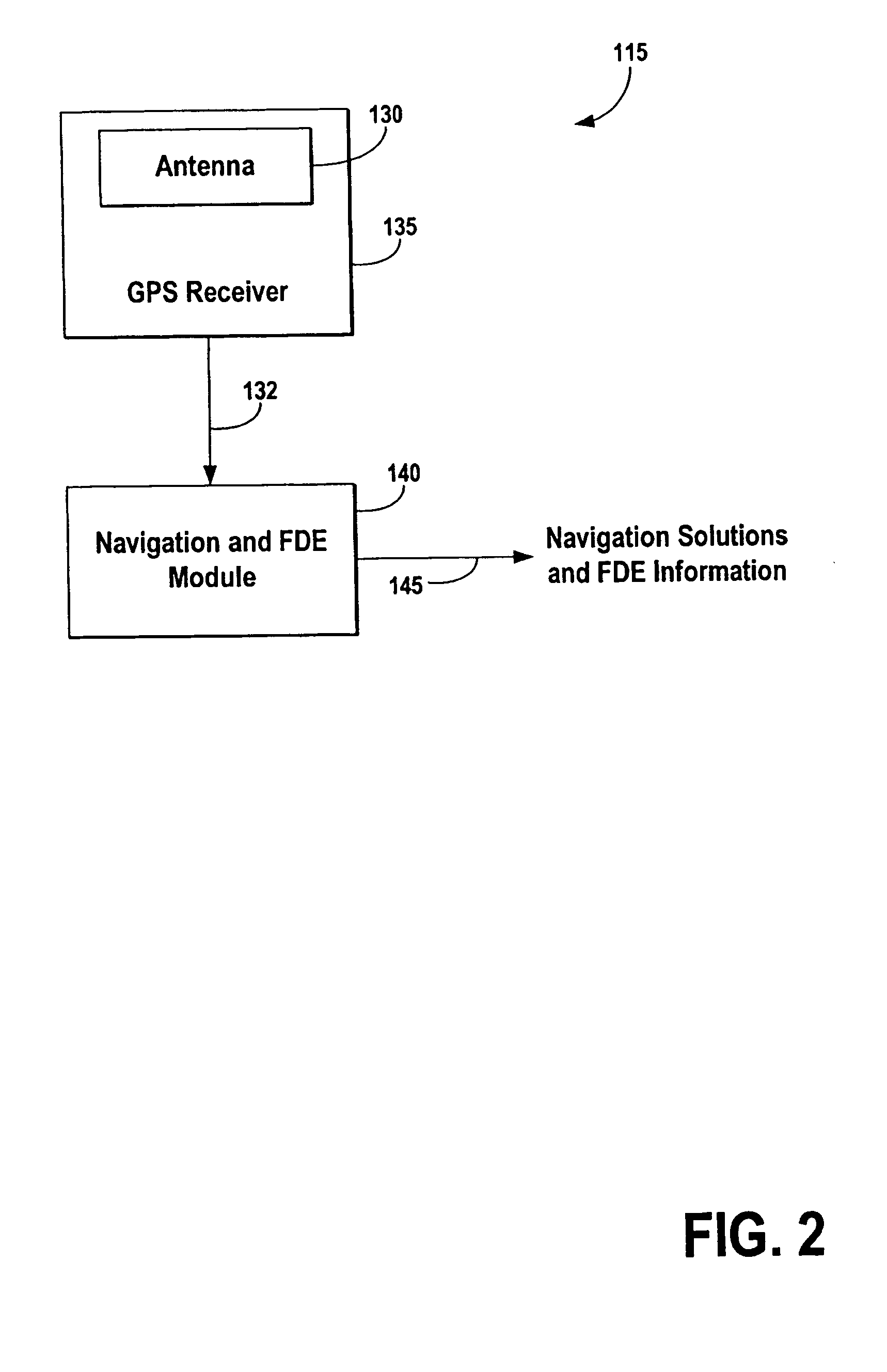Systems and methods for fault detection and exclusion in navigational systems
a navigation system and fault detection technology, applied in the field of navigational systems, can solve the problems of inability to provide horizontal position integrity information, system that provides ranging signals for navigation purposes also has similar problems, and the gps satellites are subject to significant errors, so as to reduce the likelihood of erroneous identification, reduce computational intensity, and improve the likelihood of rapid and successful identification
- Summary
- Abstract
- Description
- Claims
- Application Information
AI Technical Summary
Benefits of technology
Problems solved by technology
Method used
Image
Examples
Embodiment Construction
[0026] The present invention now will be described more fully hereinafter with reference to the accompanying drawings, in which some, but not all embodiments of the invention are shown. Indeed, these inventions may be embodied in many different forms and should not be construed as limited to the embodiments set forth herein; rather, these embodiments are provided so that this disclosure will satisfy applicable legal requirements. Like numbers refer to like elements throughout.
[0027] The present invention is described below in conjunction with a Global Positioning System (GPS). It is understood, however, that the present invention can be applied to any ranging technology, where the invention is supplied with ranging data from multiple sources for determining navigational information. The invention is described below in a GPS system merely to aid in the understanding of the invention to other types of ranging sources and systems. For example, the system could be used with laser and r...
PUM
 Login to View More
Login to View More Abstract
Description
Claims
Application Information
 Login to View More
Login to View More - R&D
- Intellectual Property
- Life Sciences
- Materials
- Tech Scout
- Unparalleled Data Quality
- Higher Quality Content
- 60% Fewer Hallucinations
Browse by: Latest US Patents, China's latest patents, Technical Efficacy Thesaurus, Application Domain, Technology Topic, Popular Technical Reports.
© 2025 PatSnap. All rights reserved.Legal|Privacy policy|Modern Slavery Act Transparency Statement|Sitemap|About US| Contact US: help@patsnap.com



